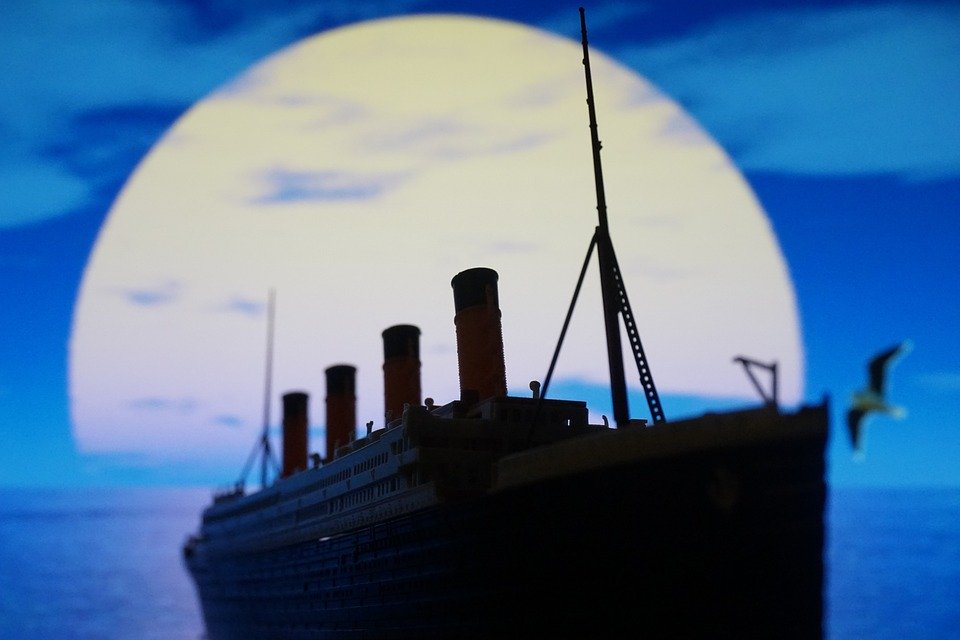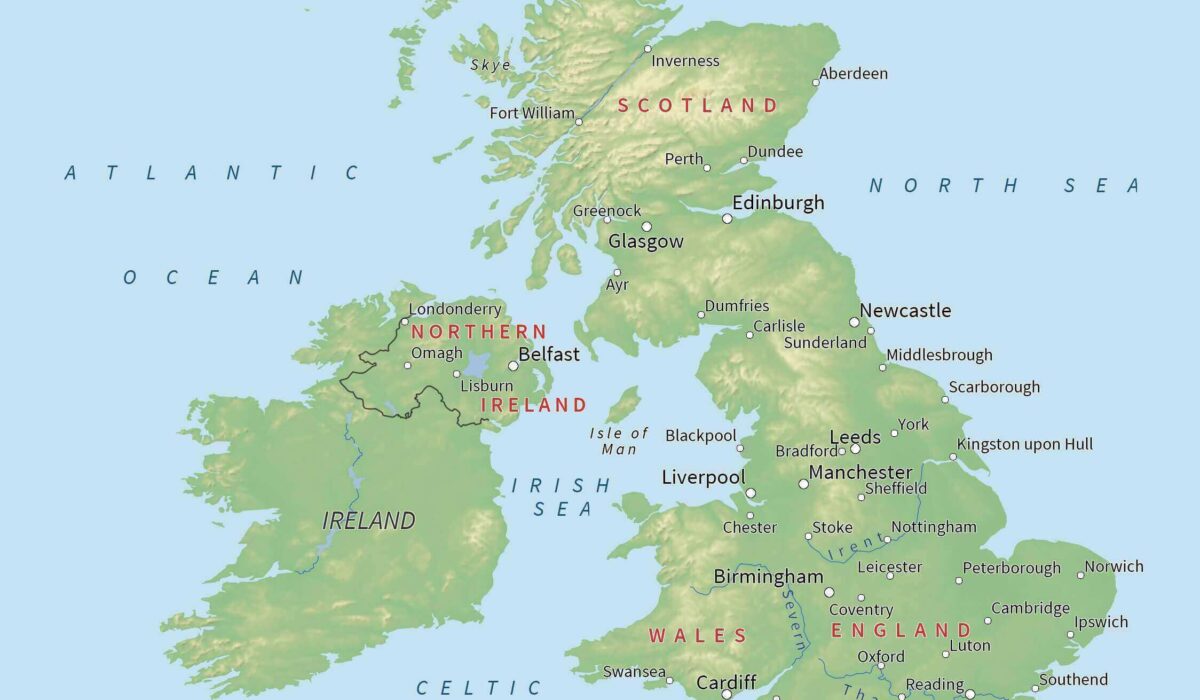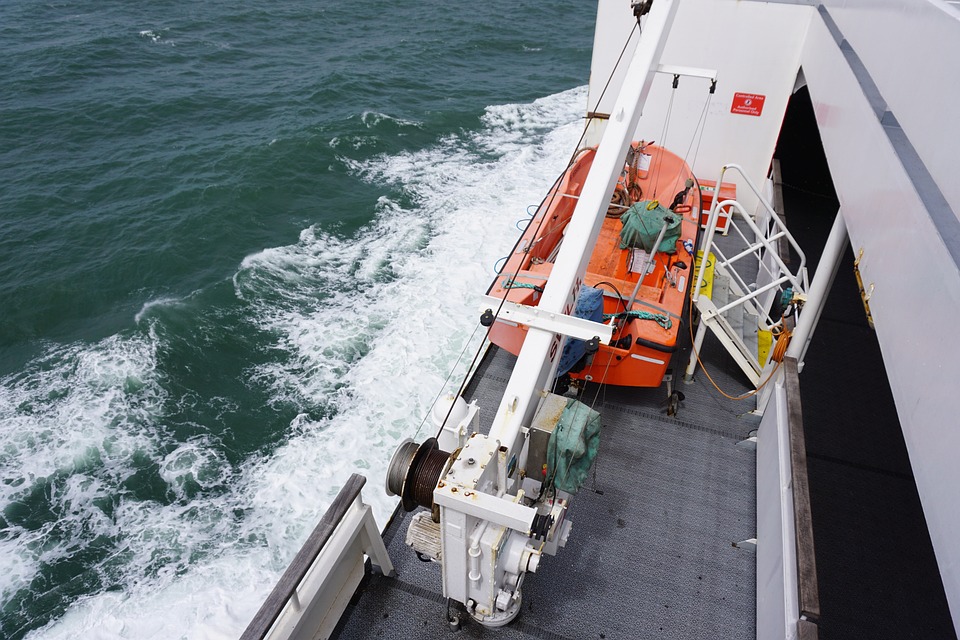Sinking of the Lusitania

The sinking of the Lusitania, a UK-registered, Cunard ocean liner by an Imperial German Navy U-20 submarine commanded by thirty-year old, Kapitänleutnant Walther Schwieger, occurred during the First World War, on 7 May 1915, about 11 nautical miles (20 kilometres) off the south coast of Ireland (the Old Head of Kinsale).
After the torpedo struck, a second explosion occurred within RMS Lusitania, which caused it to sink in only 18 minutes.
The sinking of the Lusitania took place in the declared maritime war-zone after the German Admiralty Declaration of February 4, 1915 stated, "All the waters surrounding Great Britain and Ireland, including the whole of the English Channel, are hereby declared to be a war zone."
The Declaration of unrestricted submarine warfare warned neutral shipping to stay away from these waters from 18 February 1915 onward.
Naval Blockade

Britain used its large navy in the British Blockade to prevent cargo vessels entering enemy ports from 1914 to 1919 across the North Sea and the English Channel.
It was implemented to cut the flow of vital food and fuel supplies as well as depriving the supply of fertilizer that was vital to agriculture.
The Naval Blockade targeted Germany and the other Central Powers (military alliance) of Austria-Hungary, Bulgaria and the Ottoman Empire with the intent of forcing them into submission.
Germany retaliated with the German Admiralty Declaration of unrestricted submarine warfare.
Final Voyage

On April 30th 1915, the Lusitania was docked at New York, being loaded with food, medical supplies and other inventory.
It was also being loaded with munitions for the war effort, which is still being debated.
On the same date, German Commander, Kapitänleutnant Walter Schwieger took his U-20 submarine to the waters surrounding Great Britain and Ireland to seek and destroy ships going to and from Liverpool, England.
On May 1, 1915, the date of Lusitania’s sailing, the German embassy in Washington put a notice in the shipping pages of newspapers that “vessels flying the flag of Great Britain, or of any of her allies, are liable to destruction.”
A number of prominent passengers had also received anonymous telegrams warning them not to sail.
Through a false sense of security, those who boarded, felt safe because the Lusitania was a passenger ship.
Americans travelers believed that as members of a neutral nation, they would travel unharmed.
Sinking of the Lusitania
At noon on Saturday, May 1, 1915, Lusitania sailed out of New York for the last time bound for Liverpool, England.
On board, there were:
*694 crew commanded by Commander William Thomas Turner (23 October 1856 – 23 June 1933).
*1,265 passengers, mostly British as well as a large number of Canadians and included 128 Americans.
Among the prominent passengers on board was Alfred Gwynne Vanderbilt Sr (October 20, 1877 – May 7, 1915), a wealthy American businessman, and a member of the Vanderbilt family who died in the sinking of the Lusitania.
On May 6th, Lusitania entered the area declared a war zone by Germany.
It was sighted at 1:20 p.m. Greenwich Time (2:20 p.m. German time).
Schwieger immediately ordered the submarine to submerge to a depth of 11 meters and from a range of 700 meters, one gyroscopic torpedo was fired and hit its target.
United States Entry in World War I

In August, 1914 the United States declared its neutrality in the war engulfing Europe.
Over time however, the neutral mood of the American public changed:
*Reports of German atrocities against the civilian population of Belgium in 1914.
The German Army invaded neutral Belgium on 4 August 1914 and executed civilians en masse, including the destruction of civilian property.
Many other civilians died during expulsion, deportation, imprisonment, or by death sentence.
*The sinking of the Lusitania in 1915.
The sinking of RMS Lusitania caused international outrage, particularly in the then-neutral United States.
*Publication of the Zimmermann Telegram.
In January 1917, British cryptanalyst, Nigel de Grey deciphered a telegram from German Foreign Minister Arthur Zimmermann to the German Minister to Mexico, Heinrich von Eckhardt, offering the American territories of Texas, New Mexico, California, and Arizona to Mexico it had lost during the 1840s, in return for joining the German cause.
*Germany's resumption of submarine attacks on passenger and merchant ships on February 1, 1917 which included American merchant ships in the North Atlantic in an attempt to break the Transatlantic supply chain from the US to Britain.
These factors were behind President, Woodrow Wilson's decision to enter the United States into World War I on April 6, 1917.
Sinking of the Lusitania

The Lusitania was sunk in 18 minutes, on her 202nd trans-Atlantic crossing, on 7 May 1915.
There were 48 lifeboats but, only 6 were successfully lowered, all from the starboard side.
Many had overturned while loading or lowering, spilling passengers
Of the 1,959 men, women, and children on board:
*1,195 perished, including 123 Americans.
*Of 124 children on board, 94 perished, including 31 of 35 infants.
*Only 289 bodies were recovered of which 65 were never identified.
*There were 761 survivors.
Captain Turner stayed on board until the ship sank from under him.
He was rescued from the water by the crew of the small steamer, Bluebell.
The fact that he did not go down with his ship haunted Captain Turner for the rest of his life.
Aftermath

Fishing boats, tramp steamers and Admiralty ships took survivors to Kinsale and Queenstown in Ireland.
A mass funeral was held for the victims who were buried at either Queenstown, where 148 bodies were interred in the Old Church Cemetery, or the Church of St Multose in Kinsale.
The bodies of the remaining 885 victims were never recovered.
The sinking turned public opinion in many countries against Germany.
Germany claimed that the sinking of the Lusitania was justified because munitions were being carried on board.
Kapitänleutnant Walther Schwieger was killed in action on 5 September 1917 when his U-boat U-88 was sunk by the British Q-Ship HMS Stonecrop with the loss of all hands.
Captain William Turner's son, Merchant Navy Able Seaman Percy Wilfred Turner was lost on 16 September 1941, during World War II, on MV Jedmoor when it was sunk by the German submarine U-98.
Ian Holbourn and Avis Dolphin
Ian Holbourn (5 November 1872 – 14 September 1935) and Avis Gertrude Dolphin (24 August 1902 – 5 February 1996) were survivors of the 7 May, 1915 sinking of the Lusitania.
Ian Holbourn (John Bernard Stoughton Holbourn) was laird (owner of a large estate) of Foula (located in the Shetland archipelago of Scotland and purchased by Ian Holbourn around 1900), a professor and lecturer for the University of Oxford, and author.
Ian was returning home from a lecture tour of America to take up his position as a professor at the University of Cambridge, to reunite with his wife and three sons and to publish a book he’d been working on for twenty years.
Before sailing, Ian dreamed three separate times that the ship he would travel would be torpedoed.
His wife also had the same dream.
Avis Dolphin was being escorted by two nurses, Hilda Ellis and Sarah Smith to England, where she was to live with her grandparents and attend school when she befriended Ian Holbourn.
This is the story of a friendship between a 43 year old Scottish professor and a 12 year old English girl who both survived as Second Class passengers on the last voyage of the Lusitania.
Their friendship began when Ian noticed Avis sitting on a deck chair looking very seasick and with no parents in sight.
He sat next to her and tried to cheer her up with stories about his home in Foula, his three sons and other stories.
Ian decided to take special care of her because Avis had no family on-board.
Sinking of the Lusitania
Avis had just eaten lunch when the torpedo struck suddenly causing dishes to crash off the tables.
Ian was able to get Avis and the two nurses into lifebelts, onto the deck, and into a lifeboat.
He kissed Avis, and fearing that he would not survive, told her to “find his wife and children and kiss them goodbye for him”.
Unfortunately, the lifeboat capsized while being lowered into the water when two men attempted to jump into it.
Avis managed to swim clear of the sinking liner where two men pulled her up onto a raft.
The bodies of her two nurses, Sarah Smith and Hilda Ellis, were never recovered.
Ian stuffed his manuscripts into his clothing and jumped into the waters to save himself since there were no lifeboats left.
He found himself surrounded by a mass of bodies and wreckage.
Nearby, a man was floating helplessly but sadly, by the time he found his way to a lifeboat, the man he had pulled along with him was dead.
Eventually, Ian was picked up by the fishing boat Wanderer of Peel and later transferred to the Stormcock and then Queenstown that night.
Following her recovery in Queenstown, Avis visited Ian in hospital regularly who was suffering from exposure.
Avis was introduced to journalist, Thomas Foley during a visit to the Holbourn home, and the two wed in 1926.
She continued her friendship with Ian and his family until the end of his life in 1935.
Avis lived in Snowdonia, Wales and passed away of natural causes in Meirionydd at the age of 93 on 5 February 1996.
Frances Stephens
On 4 September 1915, the U-20 submarine under the command of Walther Schwieger, sank the passenger liner, the RMS Hesperian, off Fastnet, Ireland.
The Hesperian was carrying the body of Lusitania victim, Frances Stephens (1851 – 1915) a Canadian philanthropist of Scottish descent and a prominent lady of Montréal high society.
She was traveling aboard the Lusitania in May 1915 with grandson John Harrison Chattan Stephens, maid Elise Oberlin, and nurse Caroline Milne when the liner was torpedoed.
The party traveling with her was lost in the sinking but, Frances’ body was recovered and was being transported back to Canada aboard the RMS Hesperian.
In a remarkable coincidence, Frances Stephens became a victim twice by the same submarine and commander.
Her casket now lies in Hesperian‘s hold, not far from the Lusitania which took her life.

Ezine Articles Author Link
Click on the Link Below

Newsletter Opt-in-Form
The Keen Traveler
Your second block of text...
Recent Articles
-
Spiritual Treasures of Life
Nov 26, 25 04:44 AM
Spiritual treasures of life are internal riches that are more valuable and everlasting than material wealth. -
Teachings of Jesus Christ
Oct 14, 25 05:45 AM
The Teachings of Jesus Christ have fascinated people for centuries with their powerful Message of love and hope that have stood the test of time. -
God's Greener Pastures
Jul 17, 25 01:26 AM
God's Greener Pastures symbolize a state of spiritual and physical well-being through abundance and peace.


